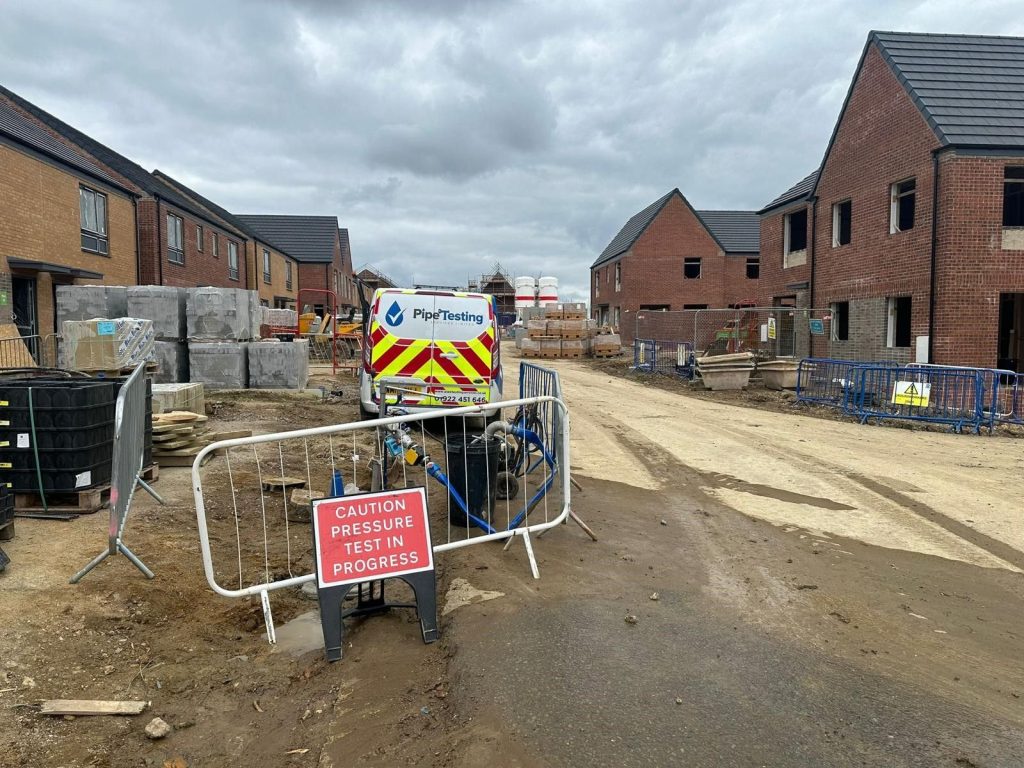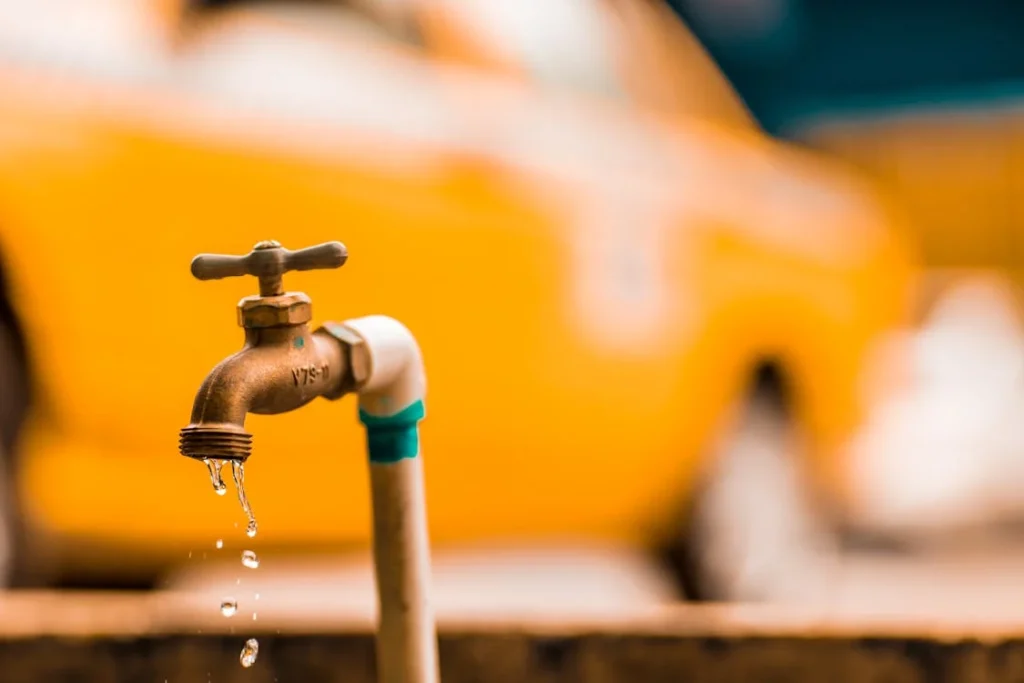Biofilm Removal Services – Ensuring Safe and Efficient Water Systems
When it comes to managing water quality and maintaining safety in industrial and commercial settings, biofilm removal is a critical service. Biofilm is a common but complex issue within water systems, particularly those in large buildings or industrial facilities, and its presence can encourage the growth of harmful bacteria, including Legionella.
Pipe Testing Services (PTS) offers advanced biofilm removal services, as part of our comprehensive legionella control solutions, ensuring that your water system remains safe, efficient, and compliant with UK water safety standards.
Let our biofilm and Legionella experts guide you with precision and proactive water safety management. We ensure every step aligns with the highest industry standards, protecting your water systems from potential risks. Contact us today to safeguard your facility and maintain full compliance.
What is Biofilm, and Why is it a Concern?
Biofilm forms when bacteria and other microorganisms adhere to surfaces within water systems, creating a slimy, protective layer that can spread throughout piping. In industrial settings, biofilm harbours bacteria, contributes to corrosion, and can reduce overall system efficiency.
Left untreated, biofilm build-up can lead to serious health and safety issues, especially the growth of Legionella bacteria, which can cause Legionnaires’ disease, a potentially fatal respiratory illness.
Biofilm removal is essential for the health of your water systems. At Pipe Testing Services, we integrate biofilm removal into our legionella control services to offer a comprehensive approach that addresses both immediate and long-term water safety needs.
Key Aspects of Effective Biofilm Removal
The removal of biofilm is a multifaceted process that demands specialised tools, expert knowledge, and a tailored approach for each system. Here are the key methods we employ at PTS:
Detection and Assessment
Effective biofilm management begins with detection. Our team at PTS conducts detailed inspections and sampling tests, including ATP (adenosine triphosphate) testing, which measures the energy molecules in living cells, to accurately detect biofilm presence and assess its extent within your system. At PTS we work with UKAS-accredited labs for legionella testing
Chemical Treatments
Chemical treatment is one of the most effective methods for breaking down biofilm. At PTS, we use chlorine dioxide (ClO₂), a powerful chemical agent capable of penetrating and disrupting biofilm structures. This broad-spectrum treatment is highly effective, even in complex pipework, where it can target the biofilm matrix without excessive chemical concentrations.
Physical Cleaning Techniques
Mechanical methods, such as high-pressure jetting, are often combined with chemical treatments to remove biofilms from pipe surfaces. High-pressure jetting can physically dislodge biofilms, particularly in challenging areas of industrial systems, ensuring thorough cleaning.
Temperature Control
Maintaining optimal water temperatures can be an effective way to inhibit biofilm formation. Our PTS team provides guidance on water temperature management, helping you maintain hot water systems above 60°C and cold systems below 20°C – temperature ranges that discourage biofilm growth and reduce the risk of Legionella.
Routine Maintenance
Biofilm reformation is always a concern, which is why regular maintenance is crucial. PTS offers ongoing monitoring, cleaning, and disinfection schedules, enabling clients to keep biofilm under control and maintain a safe water system over time.
Biofilm Removal as Part of Legionella Control
As a leading provider of legionella contractor services, PTS integrates biofilm removal as a core element of our Legionella management and control programs. Here’s how our services go beyond just detection:
- Legionella Risk Assessment - A thorough risk assessment is the first step in identifying the potential for biofilm growth within your water system. By assessing your system’s setup, usage, and risk factors, our team can recommend the most appropriate biofilm control methods.
- Site-Specific Biofilm Removal Strategies - Every water system is unique, requiring tailored removal strategies to be effective. We design site-specific plans based on your system’s characteristics, ensuring that our biofilm removal approach is safe, effective, and minimally disruptive to your operations.
- Advanced Treatment Solutions - PTS employs a range of state-of-the-art techniques, including ultrasonic cleaning and advanced chemical treatments, to break down and remove biofilms in challenging areas of pipework.
- Monitoring and Follow-Up - Post-removal, we implement regular testing and monitoring schedules to confirm the success of our biofilm control efforts. This ongoing evaluation allows us to adapt our approach as necessary, helping you maintain a high standard of water quality.
Biofilm Removal for Water System Recommissioning
During the recommissioning of water systems, biofilm removal is a critical step. Dormant or infrequently used systems are especially vulnerable to biofilm build-up, which can lead to a rapid spike in bacteria levels once the system is reactivated. Here’s how PTS supports recommissioning:
- During the recommissioning of water systems, biofilm removal is a critical step. Dormant or infrequently used systems are especially vulnerable to biofilm build-up, which can lead to a rapid spike in bacteria levels once the system is reactivated. Here’s how PTS supports recommissioning:
- Intensive Cleaning Protocols – Our team applies intensive chemical and mechanical cleaning to remove accumulated biofilms.
- Disinfection – Following cleaning, we conduct comprehensive disinfection to eliminate remaining microorganisms.
- Enhanced Monitoring – After recommissioning, we maintain a heightened monitoring routine to ensure biofilm control is sustained.

Challenges in Biofilm Removal for Industrial Settings
Industrial water systems often present unique challenges for biofilm management. Common challenges include:
- System Complexity – Large, complex piping layouts make thorough biofilm removal more difficult.
- Material Compatibility – Not all cleaning methods are suitable for every pipe material; PTS carefully selects appropriate treatments.
- Operational Constraints – Minimising downtime while ensuring effective biofilm removal is essential in industrial settings.
- Resistant Bacteria – Some biofilms contain resistant bacteria that require specialised treatment protocols.
Contact Pipe Testing Services
For expert biofilm removal, legionella risk assessments, and other essential pipe testing services, reach out to Pipe Testing Services today.
- Phone: 01922 451646
- Email: enquiries@pipetestingservices.co.uk
- Address: Unit 27 Birchbrook Industrial Estate, Shenstone, Lichfield, Staffs, WS14 0DJ
Our knowledgeable team is dedicated to delivering high-quality water safety and testing services tailored to meet your specific needs. Contact us now to discuss your requirements and receive a personalised quotation that fits your budget and ensures the highest standard of service.
FAQs - Biofilm Removal
Why is biofilm removal important for Legionella control?
Biofilms provide a protective environment for Legionella bacteria, allowing them to thrive. Removing biofilm reduces the risk of Legionella contamination.
What are the most effective biofilm removal methods?
A combination of chemical treatments, such as chlorine dioxide, and mechanical cleaning techniques like high-pressure jetting are often most effective.
How often should biofilm removal be performed?
Regular inspections and periodic cleanings are recommended, but the frequency depends on system usage, risk levels, and previous contamination history.
Can biofilm form in cold water systems?
Yes, while hot water systems are more susceptible, biofilm can form in cold systems, particularly if water temperatures are above 20°C.
What does a legionella risk assessment involve?
It includes system inspection, water sampling, and a review of temperature control and usage patterns to identify potential Legionella risks.
Does biofilm removal disrupt regular operations?
PTS works to minimise disruption, often performing biofilm removal during low-usage periods and using targeted methods suited to your system’s needs.
How does chlorine dioxide compare to traditional chlorine?
Chlorine dioxide is more effective for biofilm control because it penetrates biofilm layers more effectively and works across a wider pH range.
Is biofilm removal required for all water systems?
While not all systems require it, any system with Legionella risk factors should consider periodic biofilm removal.

